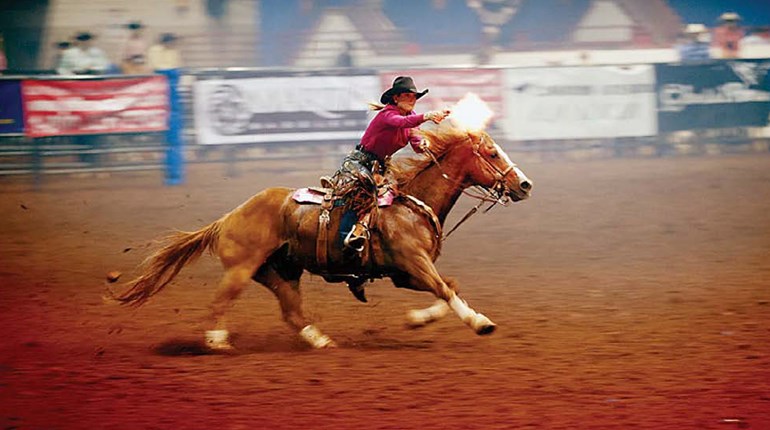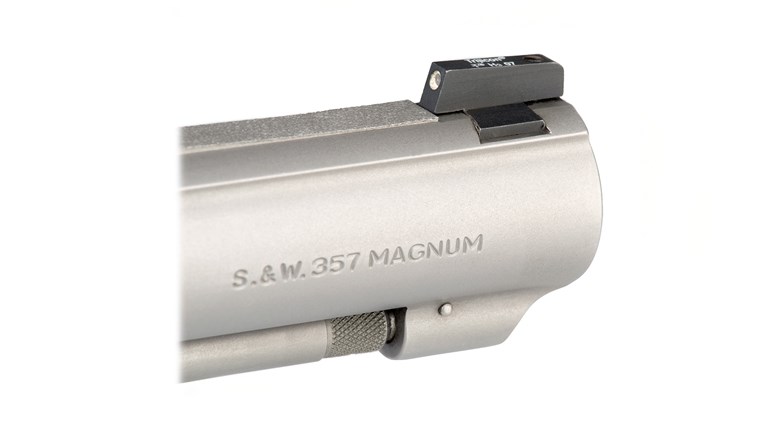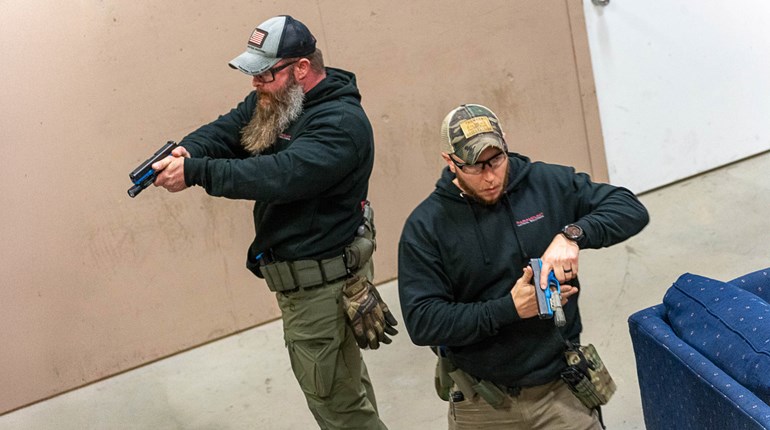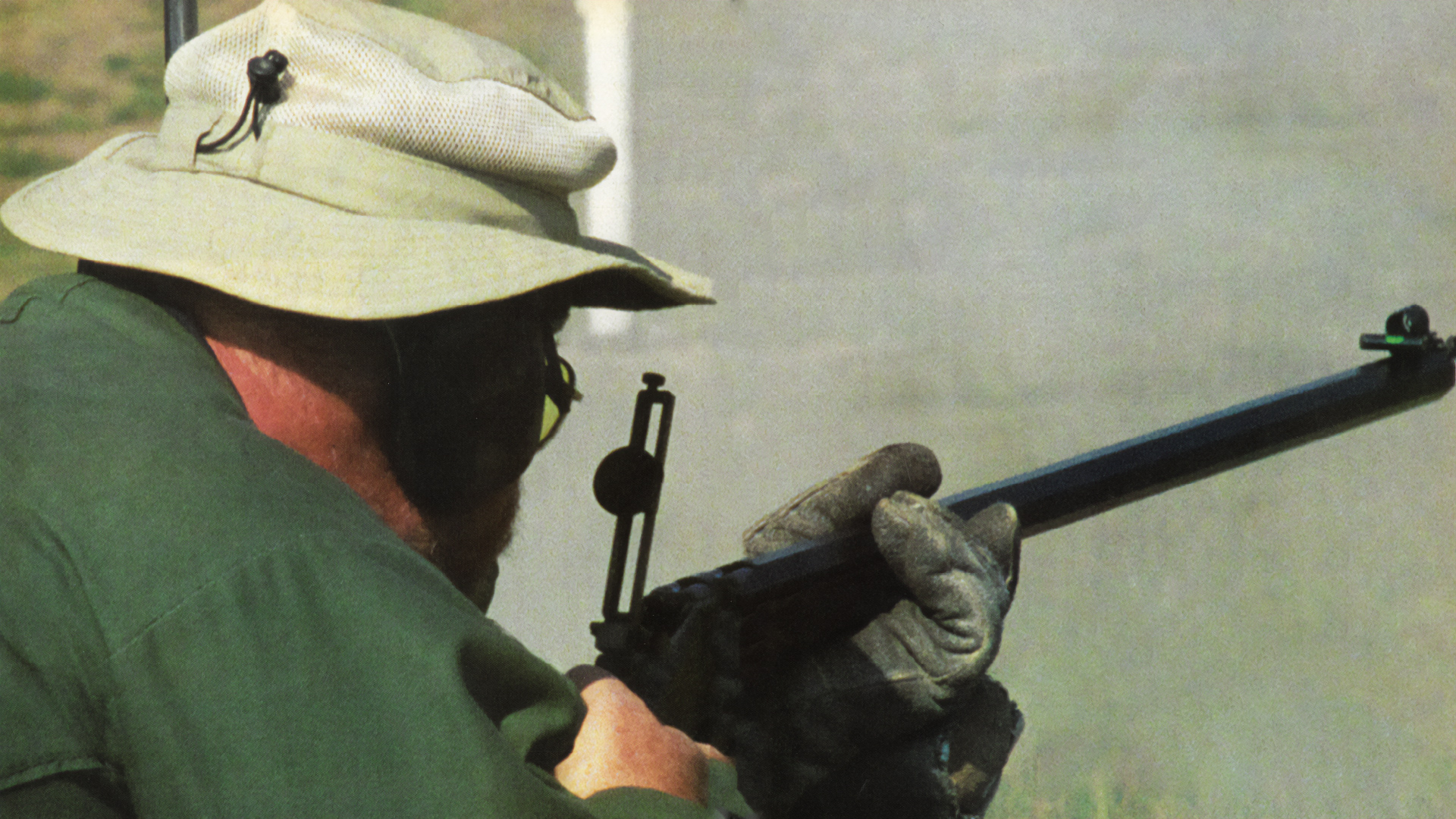
From the vault: Our coverage of the 2003 World Historical Rifle Long-Range Individual Championship, held that year at Bisley Range in the United Kingdom. Read below the article by George Harris as published in the January 2004 issue of Shooting Sports USA.
Boomers at Bisley
Story and Photos by George Harris
Dave Hicks of Granville, New York, led the U.S. Team with his victory in the 2003 World Historical Rifle Long Range Individual Championships. The championships were conducted on the historic Bisley Stickledown Range, near London, England, on September 4, 2003.
Hicks was part of the NRA-sponsored U.S. Team of 12 shooters, a captain and a coach that traveled to England to contest the world individual and team titles. The team was selected at the 2002 NRA National Black Powder Target Rifle Championship at the NRA Whittington Center in Raton, New Mexico. In order to make the team, a participant must have fired in the top 12 of those using international equipment and ammunition. This meant no cross sticks to support the rifle and ammunition could only be blackpowder based—duplexing with smokeless powder was a disqualifier.

The American shooters, coming from all over the continental United States and Alaska, assembled at Dulles Airport in Virginia on August 28 for the eight-hour flight to London's Heathrow Airport. It was there they would begin the quest to defend both the individual and team titles won at the 1999 World Championships in Quantico, Virginia.
The Bisley tournament was divided into two parts: the two-day individual championship was a pair of daily matches comprised of 10 shots at each of three distances—800, 900 and 1,000 yards—for a two-day possible score of 300 points. The team competition was also fired over two days. Day one was from 800 and 900 yards, and day two was at 1,000 yards. Each team shooter fired 15 shots at each yard line with the six high scores at each yard line to count for each team's total. All competition was decided on Britishv5-V targets, where the maximum shot value is a five.
Day one of the individual competition, under ideal conditions, saw Hicks forge a four-point lead over German Harald Rudiger, 133-4V to 129-7V.
The second day of the individual competition had slightly more challenging weather and was led by Robinson Nitsche of Germany, who was shooting beside Hicks. Nitsche's 130-8V held a four-point lead over the 126-4V of Frank Monikowski of Hope Valley, Rhode Island. Hicks managed a 122-4V while Rudiger posted 125-3V.
After much adding, checking and re-checking, Hicks was declared the new long-range historical rifle world champion by a single point over Nitsche and Rudiger with Monikowski just one point behind the two Germans.

The final qualifying for the eight-man U.S. Team was determined by the outcome of the Individual Championship event. The top eight American shooters from the previous 60 shots would be the "USA Eight." Because of pair firing—or target sharing—each team was divided into shooting pairs; the first-place finisher was paired with the eighth-place finisher, the second with the seventh, and so on. To aid the second group of shooters, the first and second shooters stayed on the line after they were done to coach the next pairs. This helped the second pairs, as they often ended up beating the first pairs.
The first day of team competition started out ominously with typical London fog. Visibility was reduced to feet instead of miles and shooting was delayed until 10:00 a.m.
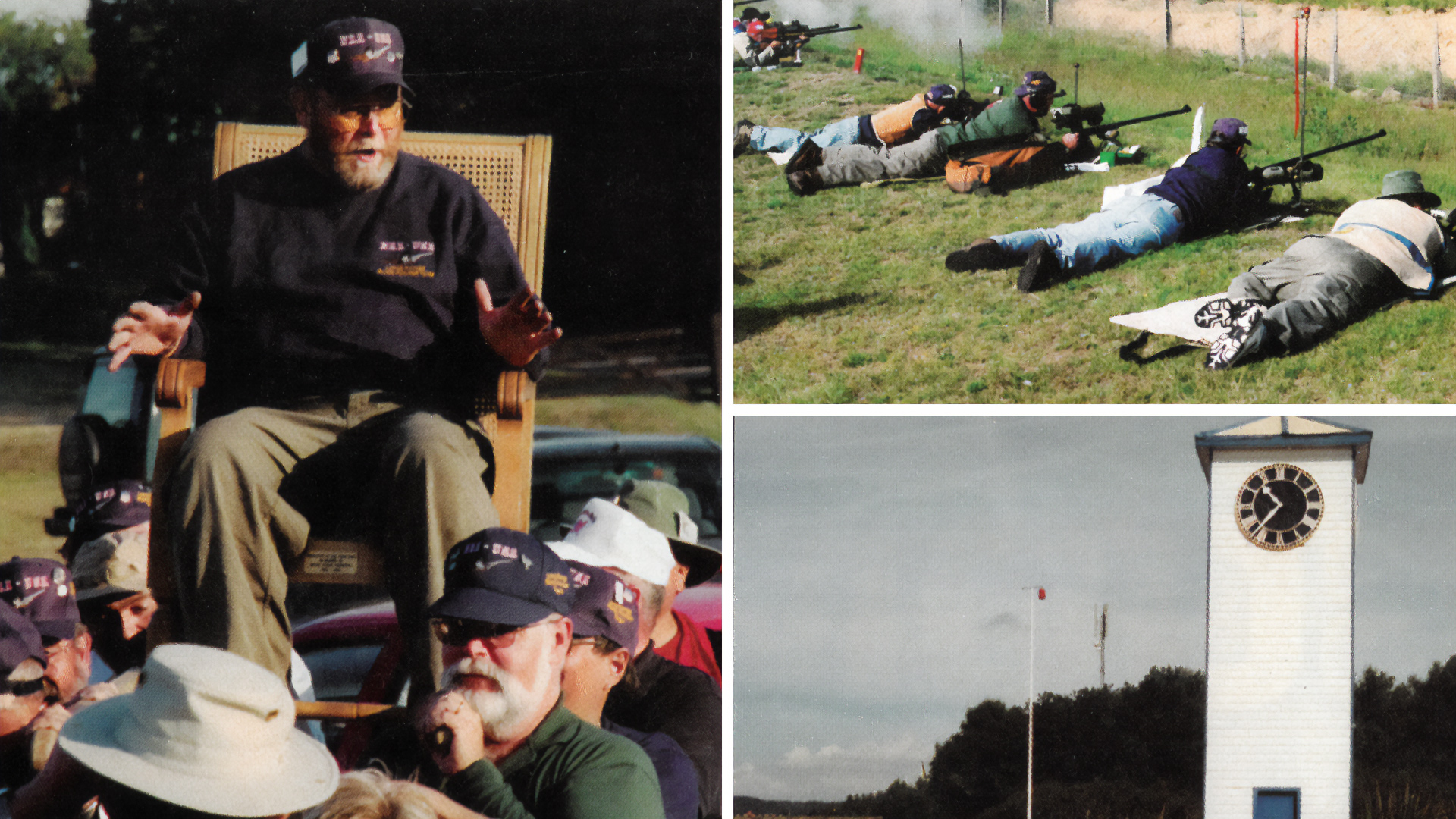
When the targets were finally visible, the U.S. Team jumped out to an early lead at 800 yards with a 430 versus 418 advantage over the Germans. Ray Hanson of Copper Center, Alaska, shot a 14 out of a possible 75 to help the U.S. Team gain this lead.
After the lunch break, conditions picked up as the competitors moved back to the 900-yard line. The Germans also picked up the pace scoring a 368 to the 358 of the Americans. At the end of the day, the U.S. Team clung to a slim two-point lead.
The next day started out overcast. By the time the competitors arrived at the range and were ready to shoot, they were thankful for the team Gore-Tex suits from Cabela's, as the rain was fairly constant with strong wind gusts.
The Germans, having practiced at Bisley often, had a game plan for the weather and executed it very well. They beat a water-logged American team 376-328 at 1,000 yards and ensured they would win their first World Team title with a total of 1162 against a total of 1116 for the U.S. team.
An awards dinner was hosted by the British Team. The American contingent and their spouses were well dressed for the occasion. At the end of the awards, It was announced that the next World Championships would be conducted in Cape Town, South Africa, in April 2006, with the tryouts for the U.S. Team at the NRA Whittington Center in Raton, New Mexico, in 2005.













